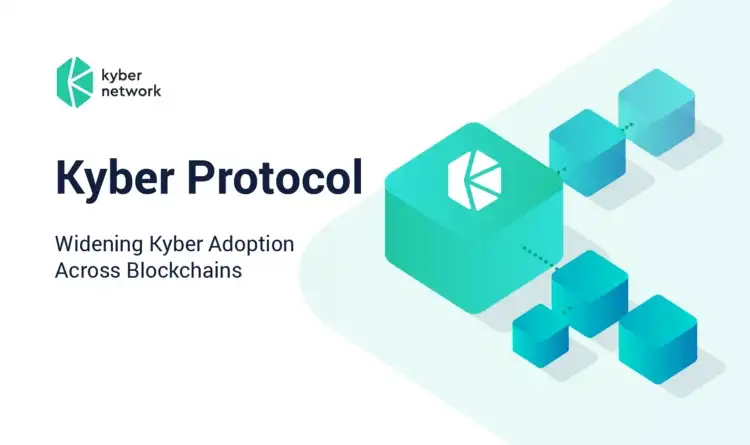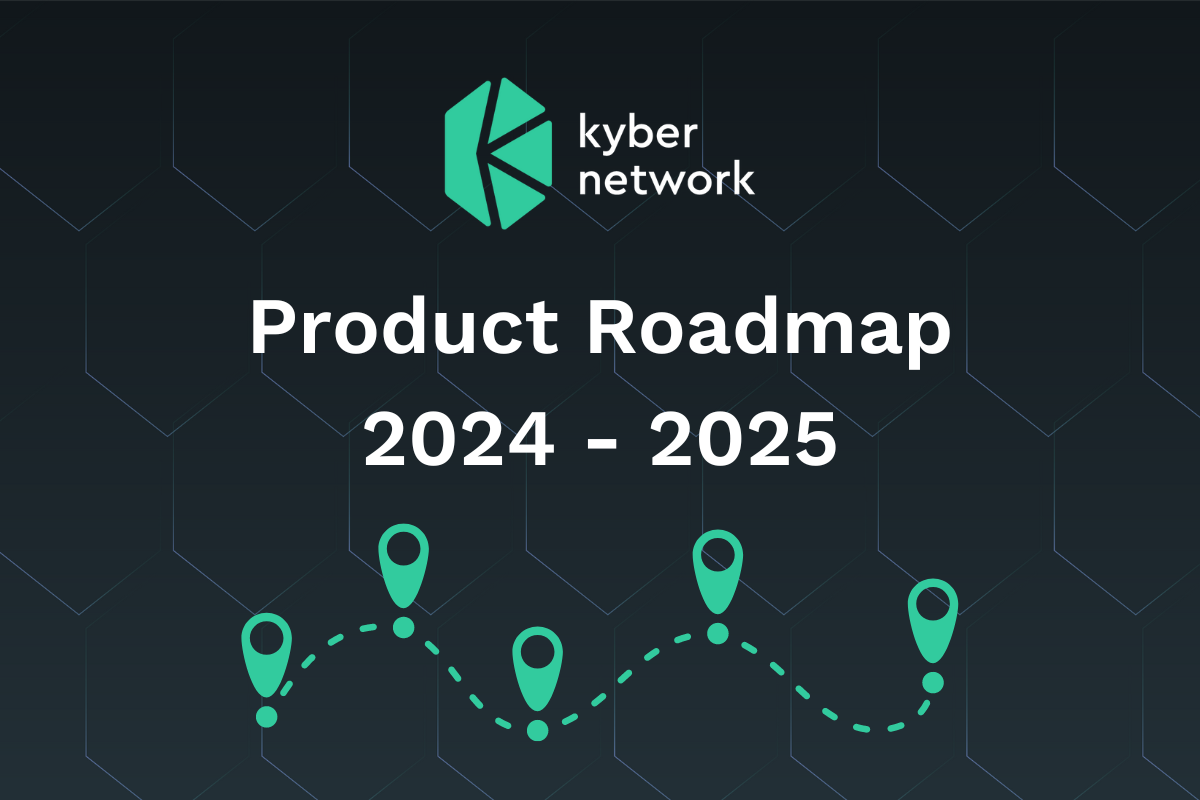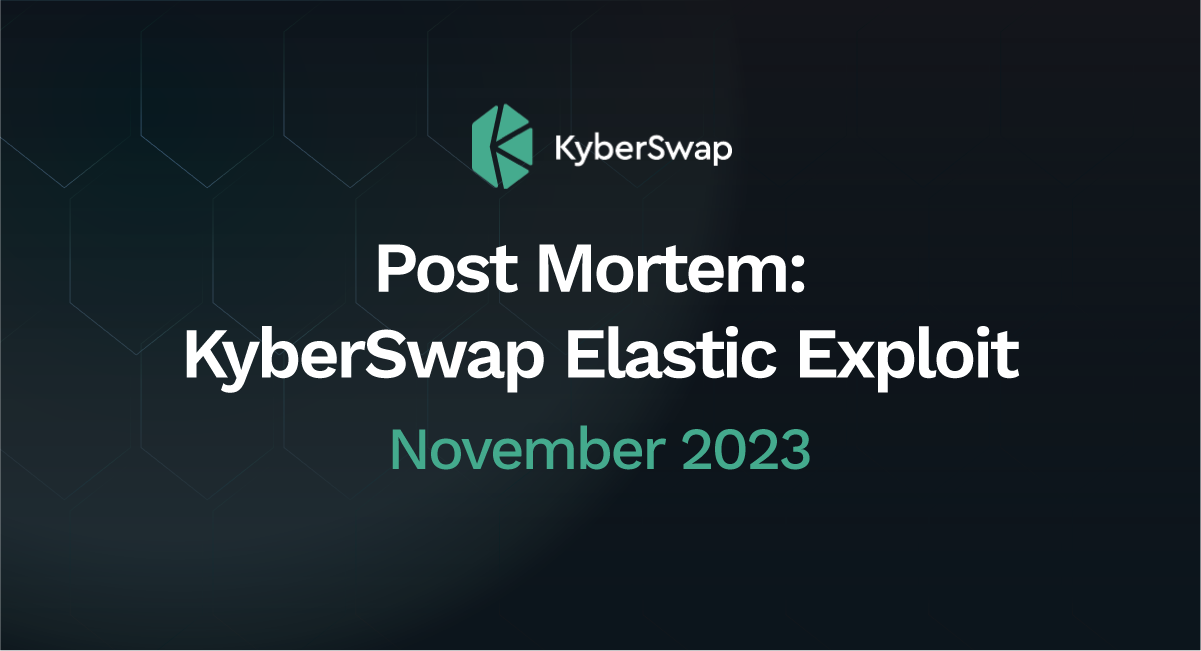At Kyber, we are focused on our mission to make any token usable and exchangeable anywhere, as summarized by our mantra of Any Token, Anywhere. Over the past year, we have been making consistent ecosystem and technical progress towards that goal, as outlined in past updates, including our long term objectives, introduction to Waterloo (a practical decentralized relay between EOS and Ethereum), DAO experiments, and recent ecosystem updates.
Today, in conjunction with the new website and developer portal, we are releasing the first version of the protocol paper, where we formalise Kyber as a liquidity protocol that can be implemented on any smart contract enabled blockchain to power on-chain token swaps. With active Kyber-based and standardised liquidity models and APIs on these chains, we can construct a connected liquidity network via the usage of relay bridges to power decentralized cross-chain swaps.
With this update, we would also like to affirm our commitment to Ethereum. Ethereum has the most vibrant developer and DApp ecosystem, and we want to contribute to its growth not just in terms of continuing our current ecosystem and technical commitments, but also by facilitating seamless liquidity between Ethereum and other blockchains. We have recently initiated WBTC (Wrapped Bitcoin) as part of our ongoing efforts to bring more liquidity to Ethereum, and we look forward to working on more of such initiatives.
Moving forward, we also see Ethereum as being our base for important protocol level systems such the KyberDAO and the Treasury. In addition, Ethereum will be the key focal point for our interoperability efforts, such as the cross-chain relays and liquidity provision we are managing.
In this post, we will focus on explaining the high level details of the protocol, explain the approach Kyber is taking in terms of interoperability, and summarise the ongoing areas of work.
The Kyber Protocol
Kyber Network is fully developed with a robust user base and DApp ecosystem on Ethereum, starting with the mainnet launch of KyberSwap.com, our in-house developed token swap service, about a year ago. Since then, Kyber has facilitated over 460,000 ETH worth of trades, powering token swaps for over 50 applications, supporting over 70 ERC20 tokens, and has more than 24 different reserves contributing liquidity to the network.
With this protocol definition, we formally outline the specifications to implement Kyber based networks with the same reserve based model and standardised APIs to any smart contract enabled blockchain.
There are a number of other blockchains with distinctively different feature sets, solving different use cases, resulting in a plethora of diverse emerging digital ecosystems. The Kyber protocol will play a key role in these blockchains by facilitating liquidity between the different stakeholders in the respective ecosystems.
The core aspects of the protocol is implemented as a set of smart contracts in the blockchain. The following diagram shows an overview of the various actors involved in the network.
The protocol defines 4 key aspects in order to drive a standardised liquidity model and transaction APIs in all Kyber-based networks.
1. Interface for any type of reserve to add liquidity to the aggregated liquidity pool.
In Kyber’s Ethereum based network today, liquidity is taken from sources as diverse as market makers, token teams, exchanges such as DutchX, Uniswap, and OasisDEX, and individual contributors.
Instead of being focused on a single type of liquidity source, the design provides an interface that anyone can use to implement and set up their reserve, as long as it conforms to the interface. Once the network maintainers register the reserve, it will be included amongst the liquidity sources that the network will use when looking for the best rates.
Takers can acquire and aggregate liquidity from all these sources while getting the best conversion rates, and only having to use a single endpoint for all their actions. Any entity can be a liquidity provider so as long as they conform to the standardized reserve interface. As a result, as more liquidity sources are added into the network, these sources are automatically accessible by the takers in the network.
2. On-chain liquidity and conversion rates
As the implementation of the Kyber protocol is completely on-chain, conversion rates and liquidity is therefore completely accessible by other smart contacts or DApps to directly communicate with the Kyber protocol. This becomes beneficial for integration with other smart contracts as liquidity and conversion rates are guaranteed before the execution of an on-chain token swap.
This approach has been a big factor on Kyber’s implementation on Ethereum, as it allowed wallets, DApps, and DeFi applications to integrate the Kyber protocol in a permissionless manner, by just having to communicate directly with the Kyber smart contracts.
3. Single endpoint for takers to easily execute instant on-chain transactions
Instead of having to rely on multiple liquidity sources, and in turn multiple endpoints, having an aggregated pool of liquidity allows a single endpoint for takers to seamlessly perform multiple token trades in a single blockchain transaction.
Similar to what was mentioned above on having conversion rates and liquidity on-chain, a single endpoint becomes beneficial for integrations as it simplifies their access to a diverse pool of liquidity and also simplifies trade execution.
4. Network maintainers for each blockchain deployment
Network maintainers play a key role in governing the Kyber implementation, ensuring it conforms to the protocol specification, and determining tokenomic parameters for that specific implementation. The initial network maintainers will be from Kyber, but will be increasingly decentralized over time as more developers from the community deploy and implement the Kyber protocol on many other blockchains.
At the protocol level, Kyber will be continuing to manage the protocol specs, coordinate collaboration between deployments and build out the overall systems, like the DAO and relay networks.
As such, all implementations will observe a standardized liquidity model and APIs. It is important to note that due to the sharp differences in the various blockchains, the implementations will differ significantly in how they execute on the exact details, including transaction fees, KNC utility and ensuring the security of the network.
This standardisation is a critical first step towards facilitating cross chain swaps between Kyber based networks on different chains, which will be discussed in more detail below.
Cross-Chain Token Swaps Between Kyber Deployments
By standardising the design of the reserve-based liquidity model and the APIs across all implementations, and by building on past work on facilitating cross-chain communications (see PeaceRelay, Waterloo), we envision a connected liquidity network across Kyber deployments on different chains.
Implementations of the protocol and driving of ecosystem and end-user adoption on major blockchains will be initially carried out by Kyber, but can also be carried out by the community or individual third parties teams. Each implementation will follow the standards laid out in the Kyber protocol specification paper.
Relay Bridges
In the paper, we also share a summary of the generalized concept of how relays can facilitate cross chain communications. One of the key enablers of this connected liquidity network will be building multiple relays to creating a relay bridge network for communicating between the different Kyber networks.
A relay bridge is deployed for every unidirectional cross-chain link in a blockchain, which in turn links each deployment of Kyber to a relayer and validator network. One potential chain topology for the relay network will be one where Ethereum acts as the bridging chain, connecting the other chains.
Explaining Kyber’s Approach To Interoperability
As mentioned earlier, it is our belief that a number of major blockchains will emerge with their own vibrant ecosystems. The focus of the core developers from these blockchains, will be on growing their chain’s utility and liquidity. Decentralized applications are going to be built on these chains and most of the decentralized transactions are going to happen natively on them as well.
Given the nature of blockchains, it is extremely challenging for systems that are not on the same chain to interoperate with each other. Being a fully on-chain system (vs sidechain or off-chain mechanisms) is a critical aspect of allowing seamless decentralized value exchange and smart contract collaboration with other DApps. The friction of interoperability skyrockets when smart contracts or applications have to communicate with each other, but one side is not fully on-chain.
Due to the above reasons, we are taking the unique approach of first deploying Kyber as a native liquidity network on each of these blockchains, with a similar liquidity model, user experience and API across these deployments. This approach allows us to be well-positioned for interoperability with the DApps and DEXes on these chains from Day 1, and ensures that the developer and user experience of using Kyber remains seamless.
Based on technical readiness and market demand, we will seek to use relays to connect the chains and exchange value across deployments, including bringing popular Ethereum tokens to other chains, and vice versa. It is important to understand that our cross-chain efforts aim to build the most seamless mechanisms to exchange value between Kyber deployments. This particular focus makes it much more feasible to build a decentralized system with good user and developer experience.
In summary, we believe this approach is the best mix of pragmatism, collaboration, and decentralization. In particular, we look forward to working with the core developers, token teams and DApps on the major blockchains to grow both the utility and liquidity of their ecosystems.
Summary And Next Steps
In this blog post, we have laid out the key tenets of the protocol specifications, which will standardize the liquidity model, transaction mechanisms and APIs for all the implementations of Kyber on the different chains. In addition, we have also articulated the connected cross-chain network we can be working on, and explained the approach to interoperability we are taking.
It is important to understand that these endeavours are ongoing processes and that developments in the whole crypto ecosystem will play a significant role in terms of driving progress and adoption. Below are the areas we intend to focus on in order to best move these plans forward.
Firstly, we intend to double down on our efforts to grow the Kyber ecosystem on Ethereum including expanding our ecosystem of DApps, exchanges and reserves and increasing user adoption of KyberSwap. We also expect protocol level activities, such as the DAO and Treasury, to be built on top of Ethereum. As mentioned earlier, Ethereum will also be the key focal point for the cross-chain relay network and the provision of liquidity.
Secondly, we will evaluate and experiment with implementing Kyber on other blockchains. For example, we unveiled a testnet DEX for seamless token swaps, based on the Waterloo Bridge. The choice of blockchains we choose to focus on will depend on a few key criteria, including the ability and readiness of the ecosystem to support a liquidity network, the availability of talented developers to drive the implementations, and the readiness of the core developers to work together with us. As such, we will seek to collaborate with core developers, token teams, DApps and exchanges on the various root chains, and update the community of any significant developments.
Lastly, at the protocol level, Kyber will create and coordinate the protocol spec that will define the various implementations. We will continue to research and build out the relay network, while continuing to work together with our Kyber community towards governance of the overall project, and manifestation of an effective DAO and treasury system.
Discord #developers channel: https://discordapp.com/invite/NfFMVz6




